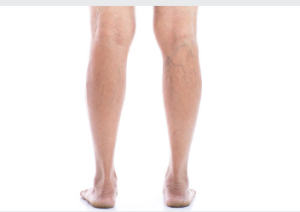Varicose veins are twisted, enlarged veins filled with blood that has begun to protrude through the skin surface in the legs. Though not life-threatening, varicose veins may cause discomfort.
 Home remedies and non invasive varicose vein removal Adelaide treatments may offer relief, such as wearing an elastic support hose, taking short breaks to raise your legs, and avoiding long periods of standing or sitting.
Home remedies and non invasive varicose vein removal Adelaide treatments may offer relief, such as wearing an elastic support hose, taking short breaks to raise your legs, and avoiding long periods of standing or sitting.
Radiofrequency occlusion
Varicose veins are protrusions from the surface of your legs that protrude abnormally, often caused by age, pregnancy or heredity. Although varicose veins may cause pain in your legs and feet if left untreated, they could pose more serious medical risks.
Varicose veins occur when blood vessels weaken, or the valves stop functioning properly, affecting approximately one-third of adults. Women tend to be more susceptible than men and are more likely to develop them post-pregnancy; there’s no clear reason for this phenomenon, though evidence suggests that hormones produced during gestation or oral contraceptives could contribute to its formation.
Non-invasive remedies for varicose veins include steroid injections and compression stockings. Other solutions, like endovenous ablation, use radiofrequency or laser energy – to destroy varicose veins and redirect blood toward healthier vessels. Under local anesthesia and in the comfort of a healthcare provider’s office, this procedure typically involves inserting a catheter (thin tube) into an enlarged varicose vein and heating its tip with radiofrequency or laser energy; this causes its walls to collapse and seal off completely. A burning sensation may arise at the injection site, similar to sunburn; applying an ice pack intermittently over 20 minutes should help alleviate it.
Sclerotherapy
People suffering from varicose veins may be good candidates for minimally invasive treatments, including sclerotherapy. Individuals without recent surgeries, pregnancies or deliveries may especially benefit from sclerotherapy as it targets most smaller varicose veins by injecting special chemicals directly into them, which causes them to close off and eventually disappear altogether. Patients must adhere to all instructions from their healthcare provider during treatment and follow up post-treatment, such as wearing compression stockings to help avoid blood clot formation at injection sites.
During the non invasive varicose vein removal Adelaide procedure, patients may experience mild discomfort. Small spider veins typically respond to sclerotherapy within three to six weeks, and larger varicose veins in three to four months. As this time passes, the injected veins fade as blood is diverted towards healthier veins; some veins do not respond and may require other methods, such as phlebectomy, for treatment.
Catheter-based procedures using radiofrequency or laser energy
Varicose veins are caused by malfunctioning valves, which allow blood to pool inside a vein and force its way back out, stretching and twisting it over time, leading to symptoms like leg pain and swelling and blood clots or skin discolouration. Minimally invasive techniques such as radiofrequency ablation and sclerotherapy may eliminate varicose veins.
Radiofrequency ablation procedures utilise heat energy to damage and seal closed veins. The process typically occurs outpatient; most people return home the same day.
Medical adhesive
People often think of healthcare supplies as stethoscopes for hearing heartbeats or syringes for giving shots, but medical tape is essential for many reasons. It secures medical equipment to the skin – temperature probes and gastric tubes – and applies directly onto patients’ eyelids under general anesthesia to protect against corneal abrasions. The medical tape also plays a critical role with its fast, secure adhesion that resists dislodgement from temperature or humidity fluctuations or exposure to fluids.
Medical-grade adhesives can make devices more comfortable for patients while increasing efficiency. A good adhesive should be non-toxic and durable, with various options to suit different needs, such as low tack surfaces or elastic support materials that allow more movement for more flexibility.
Medical-grade adhesives can only be approved for use in healthcare after extensive testing, including USP VI standardisation and ISO 10993 certification. Both tests involve selecting test variables to ensure biocompatibility requirements are met in the end product, saving both time and money during development while enabling designers to create more flexible medical-grade devices.